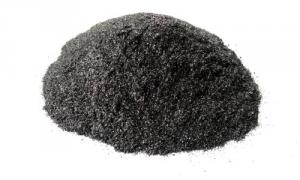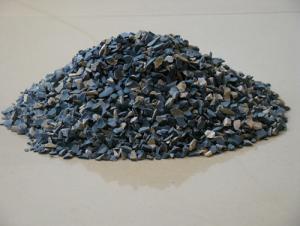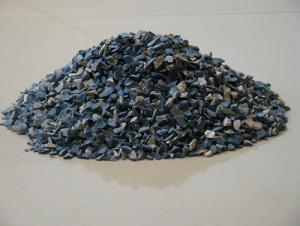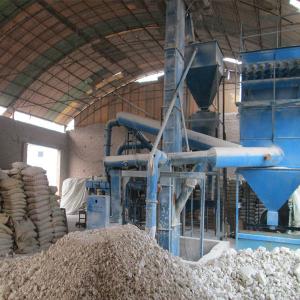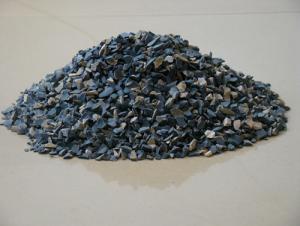QINGDAO NATURAL FLAKE GRAPHITE FC 90 WITH DIFFERENT SIZE
- Loading Port:
- Qingdao
- Payment Terms:
- TT or LC or DP
- Min Order Qty:
- 20 m.t.
- Supply Capability:
- 1000 m.t./month
OKorder Service Pledge
OKorder Financial Service
You Might Also Like
Quick Details
· Place of Origin: Shandong, China
· Shape:powder
· Material: graphite
· FC Content (%): 90%min
· V.M Content (%): 2%max
· ASH Content(%): 8%max
· Moisture:1%max
· Model Number:Customer's Requirement
· Brand Name:CMAX
· Application:Metallurgy or Refractory
· Product name:Natural Flake Graphite
· Color:Black
· Size:-100MESH/200MESH/-325mesh or Smaller
· Certificate:ISO9001
· Usage:Refractory
· Type:Refractory raw materials
· shape:powder
· Packaging Details:Bags/In bulk/As costomer's requirement'
Quality assurance:
1.On a regular basis or as per your request,we entrust national testing agencies to conduct quality inspections
2. Strictly in accordance with the ISO9001-2008 international quality system standard,we monitor and manage the whole process throughout production,quality testing,and measurement to ensure product quality
FAQ:
Q: What kind of payments does your support?
A: T/T, L/C, Cash are accepted.
Q: Do you charge for the samples?
A: Accordeing to our company policy, the samples are free, we only charge the freight fee. And we will return the freight fee during the next order.
Q: Can you produce according to customers' design?
A: Sure, we are professional manufacturer.
Q: Do you have pictures?
A: Yes, please check the pictures:
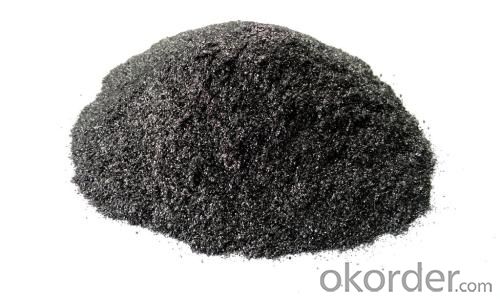
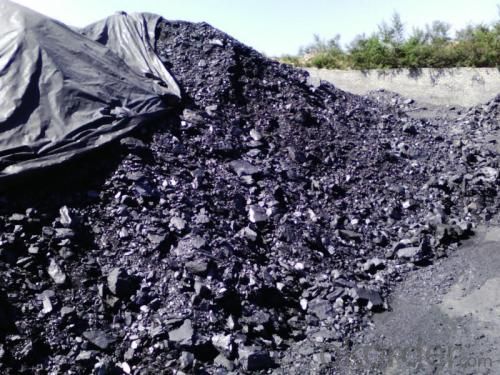
- Q:How to determine the fire resistance rating of the aluminium-plastic?panel?
- The fire resistance rating of the aluminium-plastic?panel is determined by two indicators, namely national compulsory standard of GB8624 "Building Materials Combustion Performance Grading Method ", and GB/T17748 "Aluminium-plastic?Composite Panel National Standard" . Classifications of combustion performance of building materials in our country are as follows: A class: Incombustible building materials; B1 class: Flame-retardant building materials; B2 class: combustible building material; B3 class: flammable building materials. The fire resistance rating of the aluminium-plastic composite panel shuld be no less than B1 class. 1. Detection indexes and requirements of fireproof aluminum-plastic composite panel (B1 class): (1) Conduct the test according to GB/T8625-88, the average leftover length of each test specimen should be more than 150mm, (any test piece should have leftover length), and the maximum average flue gas temperature of each test should be no more than 200 ℃; (2) Conduct the test according to GB/T8626-88, flame hight indicators.
- Q:How to divide fire resistant level of fire door?
- The classification of fire resistant level of fire door: Grade A is not less than 1.2h. Grade B is not less than 0.9h. Grade C is not less than 0.6h. It is suitable for fire door with different levels: Grade A: Equipment room (such as fire-pump room,power distribution room, generator room, smoke control fan room, etc) door, fire?compartment, door on firewall; Grade B: Eclosed staircase, front door of stair room, smoke-proof?staircase and fire elevator share lobby door, front door of fire elevator, household door which directly opens to front room or shares room; Grade C: The vertical shaft door, such as strong electric wells, weak electric wells, pipe shaft door and air conditioning facilities. I hope this information can help you.
- Q:For refractory knowledge. What is the ratio of clay ramming?mass?
- Soil aggregates, dispersing agent, water reducing agent, plasticizer, binding agent and powder! ~ Bone meal feed approximately 6, OK
- Q:Which refractory material is better in China? Industrial furnace, mainly in non-ferrous industries, glass kiln, cement kiln business.
- Such solid nano microporous insulation material with nano inorganic refractory powder special, with a huge surface area, nano particles contact between the minimum point contact point contact thermal resistance is very large, the heat conduction effect of the material becomes very small, resulting in heat conduction coefficient of solid such nano porous insulation materials very small; nano pores formed of nanoparticles, the average size of 20 nm, and the average free path of molecular thermal motion at room temperature under static air is 60 nm, thus locking the air molecules in powder within nano pores, making the micro convection heat transfer effect between the stationary air molecules disappeared. The room temperature thermal conductivity of solid such nano microporous insulation material is lower than the static air; at high temperature, the main effect of heat transfer heat radiation, Good energy-saving insulation materials with nano microporous infrared additive special, stop at a high temperature and reflected infrared radiation, reduce the heat radiation effect to the lowest point, the radiation heat transfer coefficient of materials under high temperature is reduced to the lowest value.
- Q:What's the definition of fire endurance of the fire-resistant coating for steel structure?
- Fire endurance (h): Under the condition of standard fire resistance test, the time when the building components, accessories, or structure is subjected to fire to the time when they loose stability, integrality or thermal insulation is called fire endurance which is showed in time. Steel is the kind of building material that is nonflammable with many properties of seismic resistance and bending resistance. In practical applications, steel can improve the load capacity of buildings in a relative way, meet the needs of buildings design, beauty and mould, and it can also avoid the defects of poor flexibility and tensile strength of buliding materials like concrete. Therefore, steel is quite popular in the construction industry, and it is widely used in single-story or multi-storey skyscrapers, plants, warehouses, waiting rooms and airport terminals, etc. However, as a kind of building material, it has some unavoidable defects in fire prevention. That is its mechanical properties like yield point, tensil strength and elasticity modulus will decrease dramatically with the rise of the temperature.
- Q:What a blast furnace refractories generally?
- Common refractories often use silica?brick, semi-silica brick, fireclay brick, high alumina brick, magnesia brick, etc. special materials often used are AZS brick, corundum brick, directly bonded magnesia-chrome brick, carborundum brick, silicon nitride bonded silicon carbide bricks, nitrides, silicides, sulfides, borides, carbides and other non-oxide refractory materials; calcium oxide, chromium oxide, aluminum oxide, magnesium oxide, beryllium oxide refractory insulating refractory frequently used. material diatomite products, asbestos products, insulation boards. monolithic refractories have fettling frequently used, refractory ramming mixes, refractory castable, fire-resistant plastic, refractory clay, refractory gunning refractory projection material, refractory coatings, lightweight refractory castable, stemming etc.
- Q:What are the structural properties of refractory materials provided by the manufacturer of the refractories include?
- Metal oxides have very good resistance to high temperature, such as: three, two aluminum oxide, Magnesium Oxide...
- Q:how is the high-temperature flame-retardant fibre board?
- ------ Different category of high temperature materials including refractory and heat-resistant material, inorganic compounds, high-molecular polymer. refractory usually refers to an inorganic material that can endure temperature above 1580 ℃ . They are for building kiln, combustion chamber and other buildings that require heat resistance materials. It is generally made of quartz sand, clay, magnesia mineral, dolomite.
- Q:Are there any differences between insulation and refractory materials ?
- Refractory materials can resist more than 1200 degrees, some of which are not insulation materials, such as firebricks, which can directly contact with heat source, has little insulation effect. Ceramic fiber, high silica, etc. are all refractory materials which can insulate. Insulation materials with poor performance usually is lower than 800 degrees, which have large thermal resistance, and low thermal conductivity, high porosity. Thus they reduce the thermal loss. To put it simply, insulation materials store most of the heat and only let a small part of heat lose through the air, thus the heat has been isolated. Glass fiber, rock wool, flexible material for thermal insulation, etc.
- Q:who knows the uses of refratories?
- Physical properties of refractories include structural properties, thermal properties, mechanical properties, usability and operation. structural properties of refractories include porosity, bulk density, water absorption, air permeability, pore size distribution. Refractory thermal properties include thermal conductivity, thermal expansion coefficiency, specific heat, heat capacity, thermal diffusivity, thermal emissivity. Mechanical properties of refractories include compression strength, tensile strength, anti bending strength, torsional strength, shear strength, impact strength, abrasion resistance, creep property, adhesive strength, modulus of elasticity. Refractories are used in various fields of steel, nonferrous metals, glass, cement, ceramics, petrochemical, machinery, boilers, light industry, power, military and other fields of national economy. They are essential materials that ensures the production run and technological development of the above industries, and play an important role in promoting the developemnt of high temperature industrial production. the usability of refractories include refractoriness, softening temperature under a fixed load, linear?change?on?reheating,thermal shock resistant performance,slag resistance, acid resistance, alkali resistance, hydration resistance, carbon monoxide resistance, conductivity, oxidation resistance.
1. Manufacturer Overview |
|
|---|---|
| Location | |
| Year Established | |
| Annual Output Value | |
| Main Markets | |
| Company Certifications | |
2. Manufacturer Certificates |
|
|---|---|
| a) Certification Name | |
| Range | |
| Reference | |
| Validity Period | |
3. Manufacturer Capability |
|
|---|---|
| a)Trade Capacity | |
| Nearest Port | |
| Export Percentage | |
| No.of Employees in Trade Department | |
| Language Spoken: | |
| b)Factory Information | |
| Factory Size: | |
| No. of Production Lines | |
| Contract Manufacturing | |
| Product Price Range | |
Send your message to us
QINGDAO NATURAL FLAKE GRAPHITE FC 90 WITH DIFFERENT SIZE
- Loading Port:
- Qingdao
- Payment Terms:
- TT or LC or DP
- Min Order Qty:
- 20 m.t.
- Supply Capability:
- 1000 m.t./month
OKorder Service Pledge
OKorder Financial Service
Similar products
New products
Hot products
Related keywords
